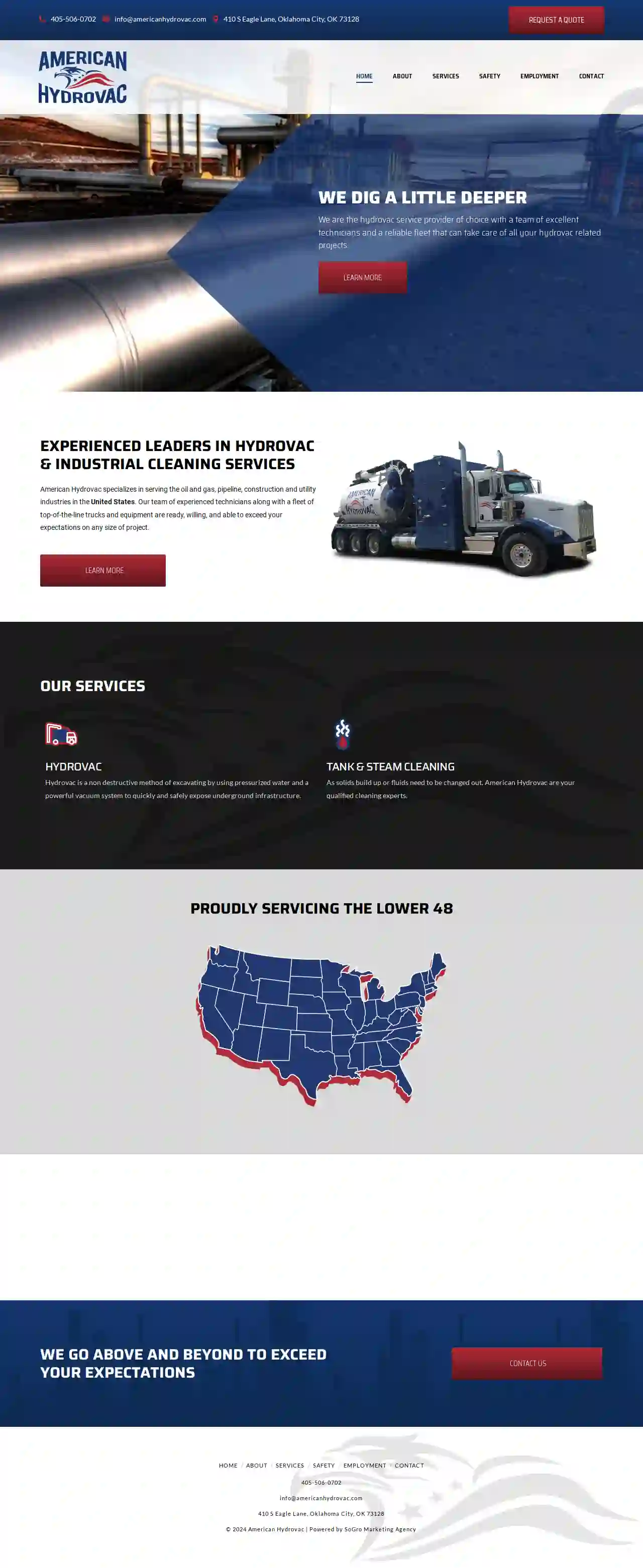Asbestos Removal Contractors Oklahoma City
Top Asbestos Abatement in Oklahoma City
Get 3 FREE Asbestos Abatement quotes for your project today! Compare profiles, reviews, accreditations, portfolio, etc... and choose the best deal.
Service Needed
City or Town

American Hydrovac
4.36 reviewsOklahoma City, US- Services
- Why Us?
Get Quote
Over 3,943+ Excavation Contractors onboarded
Our excavation contractors operate in Oklahoma City & surroundings!
ExcavationHQ has curated and vetted the Best Excavation Companies near Oklahoma City. Find a top & reliable pro today.
Frequently Asked Questions about Asbestos Removal
Find answers to common questions about asbestos removal and abatement to help you make informed decisions for your project in the USA.
- Assessment: A qualified asbestos professional should assess the condition and location of the asbestos-containing materials.
- Management Plan: Develop an asbestos management plan outlining how the asbestos will be handled, including monitoring, maintenance, or removal if necessary.
- Communication: Inform employees and other building occupants about the presence of asbestos and any planned abatement activities.
- Compliance: Ensure compliance with relevant regulations and safety standards for asbestos management and abatement.
- Inspection and Assessment: A qualified inspector identifies and assesses the asbestos-containing materials.
- Containment: The work area is sealed off with plastic sheeting and negative air pressure is established to prevent fiber release.
- Removal: Licensed professionals wearing protective gear carefully remove the asbestos-containing materials.
- Disposal: The removed asbestos is sealed in leak-proof containers and transported to a designated disposal facility.
- Air Monitoring and Clearance Testing: Air samples are collected and analyzed to ensure no asbestos fibers remain airborne.
- Restoration: After clearance testing, the work area is cleaned and restored to its original condition. The exact process may vary depending on the specific asbestos removal method and local regulations.
Can I remove asbestos myself?
Asbestos removal is highly hazardous and should never be attempted by untrained individuals. Asbestos fibers are microscopic and can easily become airborne during removal, leading to dangerous exposure. Disturbing asbestos-containing materials without proper precautions can contaminate your home and put you and your family at risk. Always hire a licensed and certified asbestos removal professional for safe and compliant abatement.
What should I do if I find asbestos in my workplace?
If you discover asbestos in your workplace, notify your supervisor or building manager immediately. The following steps should be taken:
What is the process for asbestos removal?
Professional asbestos removal typically involves these steps:
What are asbestos air monitoring and clearance testing?
Asbestos air monitoring and clearance testing are crucial steps after asbestos removal to ensure the safety of the environment and building occupants. Air monitoring involves collecting air samples during asbestos abatement to measure the concentration of asbestos fibers in the air. Clearance testing is conducted after the removal process is complete to verify that asbestos fiber levels are below permissible limits. These tests are performed by independent laboratories and are essential for confirming the safe reoccupation of the area.
Can I remove asbestos myself?
Asbestos removal is highly hazardous and should never be attempted by untrained individuals. Asbestos fibers are microscopic and can easily become airborne during removal, leading to dangerous exposure. Disturbing asbestos-containing materials without proper precautions can contaminate your home and put you and your family at risk. Always hire a licensed and certified asbestos removal professional for safe and compliant abatement.
What should I do if I find asbestos in my workplace?
If you discover asbestos in your workplace, notify your supervisor or building manager immediately. The following steps should be taken:
- Assessment: A qualified asbestos professional should assess the condition and location of the asbestos-containing materials.
- Management Plan: Develop an asbestos management plan outlining how the asbestos will be handled, including monitoring, maintenance, or removal if necessary.
- Communication: Inform employees and other building occupants about the presence of asbestos and any planned abatement activities.
- Compliance: Ensure compliance with relevant regulations and safety standards for asbestos management and abatement.
What is the process for asbestos removal?
Professional asbestos removal typically involves these steps:
- Inspection and Assessment: A qualified inspector identifies and assesses the asbestos-containing materials.
- Containment: The work area is sealed off with plastic sheeting and negative air pressure is established to prevent fiber release.
- Removal: Licensed professionals wearing protective gear carefully remove the asbestos-containing materials.
- Disposal: The removed asbestos is sealed in leak-proof containers and transported to a designated disposal facility.
- Air Monitoring and Clearance Testing: Air samples are collected and analyzed to ensure no asbestos fibers remain airborne.
- Restoration: After clearance testing, the work area is cleaned and restored to its original condition. The exact process may vary depending on the specific asbestos removal method and local regulations.
What are asbestos air monitoring and clearance testing?
Asbestos air monitoring and clearance testing are crucial steps after asbestos removal to ensure the safety of the environment and building occupants. Air monitoring involves collecting air samples during asbestos abatement to measure the concentration of asbestos fibers in the air. Clearance testing is conducted after the removal process is complete to verify that asbestos fiber levels are below permissible limits. These tests are performed by independent laboratories and are essential for confirming the safe reoccupation of the area.